Microstructure Evolution and Nanotribological Properties of Different Heat-Treated AISI 420 Stainless Steels after Proton Irradiation
Abstract
1. Introduction
2. Materials and Methods
2.1. Experimental Materials and Thermal Processing Conditions
2.2. Proton Irradiation and Nano-Scratch Test
2.3 TEM Characterization
3. Results
3.1. Microstructure Evolution for AISI 420 Stainless Steels with Different Heat-Treatments after Proton Irradiation
3.2. Nano-Scratch Hardness for AISI 420 Stainless Steels with Different Heat-Treatments after Proton Irradiation
3.3. Nanoscale Friction Coefficients of Differently Heat-Treated AISI 420 Stainless Steels after Irradiation
3.4. Deformation of a Nano-Scratch with Nano-Scratching of Different Heat-Treated AISI 420 Stainless Steels after Proton Irradiation
3.5. Wear Volume with Nano-Scratching of Different Heat-Treated AISI 420 Stainless Steels after Proton Irradiation
4. Discussion
5. Conclusions
Author Contributions
Funding
Conflicts of Interest
References
- Isfahany, N.; Saghafian, H.; Borhani, G. The effect of heat treatment on mechanical properties and corrosion behavior of AISI 420 martensitic stainless steel. J. Alloys. Compd. 2011, 509, 3931–3936. [Google Scholar] [CrossRef]
- Pan, L.; Kwok, C.T.; Lo, H. Enhancement in hardness and corrosion resistance of AISI 420 martensitic stainless steel via friction stir processing. Surf. Coat. Technol. 2019, 357, 339–347. [Google Scholar] [CrossRef]
- Tsai, M.C.; Chiou, C.S.; Du, J.S.; Yang, J.R. Phase transformation in AISI 410 stainless steel. Mater. Sci. Eng. A 2002, 332, 1–10. [Google Scholar] [CrossRef]
- Prieto, G.; PerezIpiña, J.E.; Tuckart, W.R. Cryogenic treatments on AISI 420 stainless steel: Microstructure and mechanical properties. Mater. Sci. Eng. A 2014, 605, 236–243. [Google Scholar] [CrossRef]
- Baldissera, P.; Delprete, C. Deep cryogenic treatment: A bibliographic review. Open. Mech. Eng. J. 2008, 2, 1–11. [Google Scholar] [CrossRef]
- Lo, J.K.; Shek, C.H. Recent Developments in Stainless Steels. Mater. Sci. Eng. R 2009, 65, 39–104. [Google Scholar] [CrossRef]
- Kati, N.; Ozan, S. Torsional behavior of a friction welded martensitic stainless steel. Mater. Test. 2016, 8, 742–747. [Google Scholar] [CrossRef]
- D′Ans, P.; Degrez, M. Sliding Wear Behavior of Friction Couples Primarily Selected for Corrosion Resistance: Iron Boride/Iron Boride and Iron Boride/Yttria-Stabilized Zirconia. Metals 2018, 8, 1071. [Google Scholar] [CrossRef]
- Prieto, G.; Tuckart, W.R. Influence of Cryogenic Treatments on the Wear Behavior of AISI 420 Martensitic Stainless Steel. J. Mater. Eng. Perform. 2017, 26, 5262–5271. [Google Scholar] [CrossRef]
- Prieto, G.; Bakoglidis, K.D.; Tuckart, W.R.; Broitman, E. Nanotribological behavior of deep cryogenically treated martensitic stainless steel. Beilstein J. Nanotech. 2017, 8, 1760–1768. [Google Scholar] [CrossRef]
- Angelini, V.; Boromei, I.; Martini, C.; Scheuer, C.J.; Cardoso, R.P.; Brunatto, S.F.; Ceschinia, L. Dry sliding behavior (block-on-ring tests) of AISI 420 martensitic stainless steel, surface hardened by low temperature plasma-assisted carburizing. Tribol. Int. 2016, 103, 555–565. [Google Scholar] [CrossRef]
- Nie, S.L.; Huang, G.H.; Li, Y.P. Tribological study on hydrostatic slipper bearing with annular orifice damper for water hydraulic axial piston motor. Tribol. Int. 2006, 9, 1342–1354. [Google Scholar] [CrossRef]
- Zhang, J.F.; Peng, S.X.; Zhang, A.L.; Wen, J.M.; Zhang, T.; Xu, Y.; Yan, S.; Ren, H.T. Nitrogen ion implantation on the mechanical properties of AISI 420 martensitic stainless steel. Surf. Coat. Technol. 2016, 305, 132–138. [Google Scholar] [CrossRef]
- Tuckart, W.; Insausti, J.; Forlerer, E.; Iurman, L. Sliding behaviour of ion nitrided AISI 420 stainless steel. Surf. Eng. 2005, 21, 463–468. [Google Scholar] [CrossRef]
- Cetin, A.; Tek, Z.; Oeztarhan, A.; Artunc, N. A comparative study of single and duplex treatment of martensitic AISI 420 stainless steel using plasma nitriding and plasma nitriding-plus-nitrogen ion implantation techniques. Surf. Coat. Technol. 2007, 201, 8127–8130. [Google Scholar] [CrossRef]
- Dalibon, E.L.; Bruhl, S.P.; Trava-Airoldi, V.J.; Escalada, L.; Simison, S.N. Hard DLC coating deposited over nitrided martensitic stainless steel: Analysis of adhesion and corrosion resistance. J. Mater. Res. 2016, 31, 3549–3556. [Google Scholar] [CrossRef]
- Dalibon, E.L.; Charadia, R.; Cabo, A.; Trava-Airoldi, V.; Bruhl, S.P. Evaluation of the mechanical behaviour of a DLC film on plasma nitrided AISI 420 with different surface finishing. Surf. Coat. Technol. 2013, 35, 735–774. [Google Scholar] [CrossRef]
- Jin, H.-H.; Hwang, S.S.; Choi, M.J.; Lee, G.-G.; Kwon, J. Proton irradiation for radiation-induced changes in microstructures and mechanical properties of austenitic stainless steel. J. Nucl. Mater. 2019, 513, 271–281. [Google Scholar] [CrossRef]
- Alshater, A.F.; Engelberg, D.L.; Donohoe, C.J.; Lyon, S.B.; Sherry, A.H. Proton irradiation damage in cold worked Nb-stabilized 20Cr-25Ni stainless steel. Appl. Surf. Sci. 2018, 454, 130–137. [Google Scholar] [CrossRef]
- Paul, V.T.; Sundaravel, B.; Murugesan, S.; Parameswaran, P. Proton Irradiation Induced Hardening and Its Recovery During Healing Treatment of Modified 9Cr-1Mo Steel. Trans. Indian. Inst. Metals. 2018, 71, 2293–2301. [Google Scholar] [CrossRef]
- Lee, J.W.; Surabhi, S.; Yoon, S.G.; Ryu, H.J.; Park, B.G.; Cho, Y.H.; Jang, Y.T.; Jeong, J.R. Study on Proton Radiation Resistance of 410 Martensitic Stainless Steels under 3 MeV Proton Irradiation. J. Magn. 2016, 21, 183–186. [Google Scholar] [CrossRef][Green Version]
- Waseem, O.A.; Jeong, J.R.; Park, B.G.; Maeng, C.S.; Lee, M.G.; Ryu, H.J. Hardness of AISI type 410 martensitic steels after high temperature irradiation via nanoindentation. Met. Mater. Int. 2017, 23, 1257–1265. [Google Scholar] [CrossRef]
- Dai, Y.; Henry, J.; Tong, Z.; Averty, X.; Malaplate, J.; Long, B. Neutron/proton irradiation and He effects on the microstructure and mechanical properties of ferritic/martensitic steels T91 and EM10. J. Nucl. Mater. 2011, 415, 306–310. [Google Scholar] [CrossRef]
- Tuckart, W.; Iurman, L.; Forlerer, E. Influence of microstructure on tribologically mixed layers. Wear 2011, 271, 792–801. [Google Scholar] [CrossRef]
- Vo, H.T.; Reichardt, A.; Frazer, D.; Bailey, N.; Chou, P.; Hosemann, P. In situ micro-tensile testing on proton beam-irradiated stainless steel. J. Nucl. Mater. 2017, 493, 336–342. [Google Scholar] [CrossRef]
- Yang, Y.; Zhang, C.; Ding, Z.; Su, C.; Yan, T.; Song, Y.; Cheng, Y. A correlation between micro- and nano-indentation on materials irradiated by high-energy heavy ions. J. Nucl. Mater. 2018, 498, 129–136. [Google Scholar] [CrossRef]
- Yang, Z.P.; Sun, B.; Gao, Z.Y.; Cai, W. Surface modifications and tailoring magnetism in Ni48·4Mn28.8Ga22.8 films by 120 keV proton irradiation. Intermetallics 2018, 98, 106–114. [Google Scholar] [CrossRef]
- Ward, J.; Middleburgh, S.; Topping, M.; Garner, A.; Stewart, D.; Barsoum, M.W.; Preuss, M.; Frankel, P. Crystallographic evolution of MAX phases in proton irradiating environments. J. Nucl. Mater. 2018, 502, 220–227. [Google Scholar] [CrossRef]
- Jiang, J.; Wu, Y.C.; Liu, X.B.; Wang, R.S.; Nagai, Y.; Inoue, K.; Shimizu, Y.; Toyama, T. Microstructural evolution of RPV steels under proton and ion irradiation studied by positron annihilation spectroscopy. J. Nucl. Mater. 2015, 458, 326–334. [Google Scholar] [CrossRef]
- Chen, Y.; Bakshi, S.R.; Agarwal, A. Correlation between nanoindentation and nanoscratch properties of carbon nanotube reinforced aluminum composite coatings. Surf. Coat. Technol. 2010, 204, 2709–2715. [Google Scholar] [CrossRef]
- Sribalaji, M.; Rahman, O.S.A.; Laha, T.; Keshri, A.K. Nanoindentation and nanoscratch behavior of electroless deposited nickel-phosphorous coating. Mater. Chem. Phys. 2016, 177, 220–228. [Google Scholar] [CrossRef]
- Janni, J.F. Energy loss, range, path length, time-of-flight, straggling, multiple scattering, and nuclear interaction probability: In two parts. Part 1. For 63 compounds Part 2. For elements 1 Z 92. Atomic Data Nucl. Data 1982, 27, 147–339. [Google Scholar] [CrossRef]
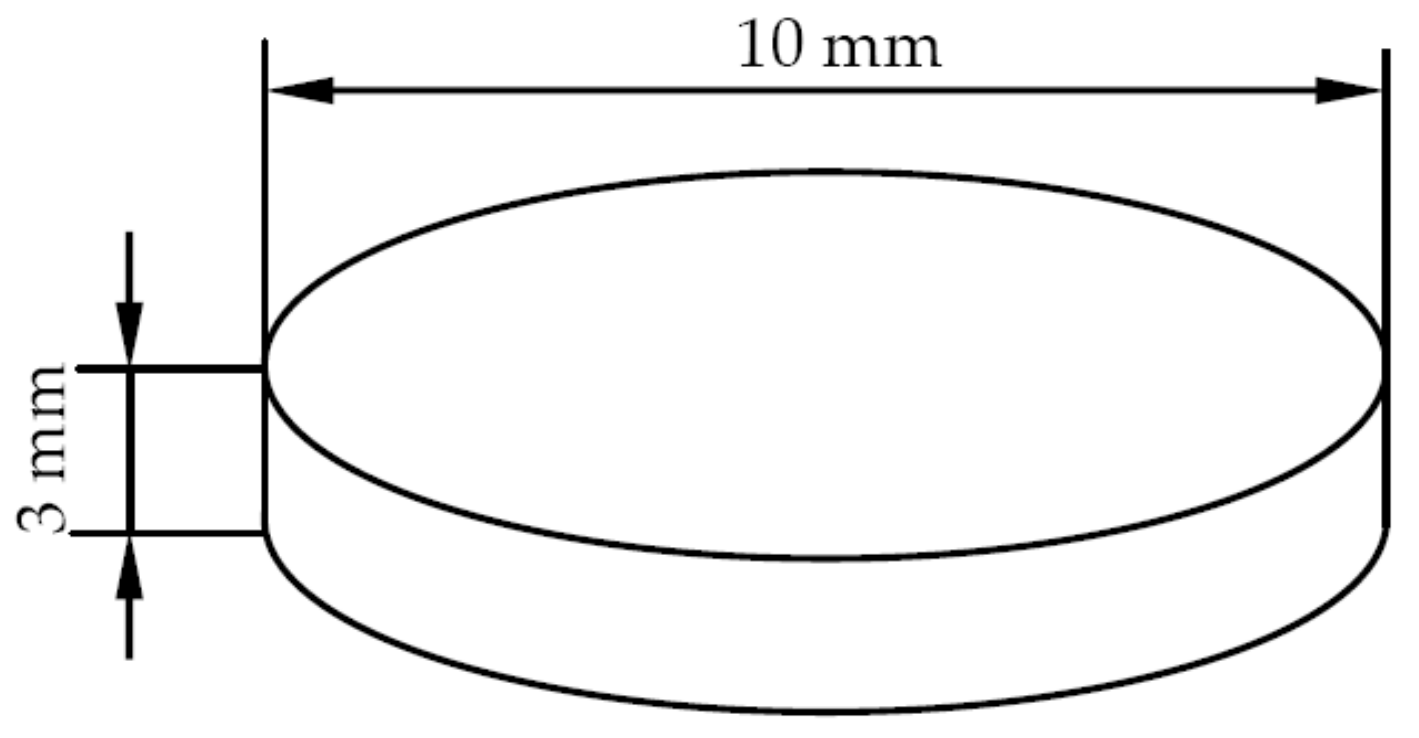
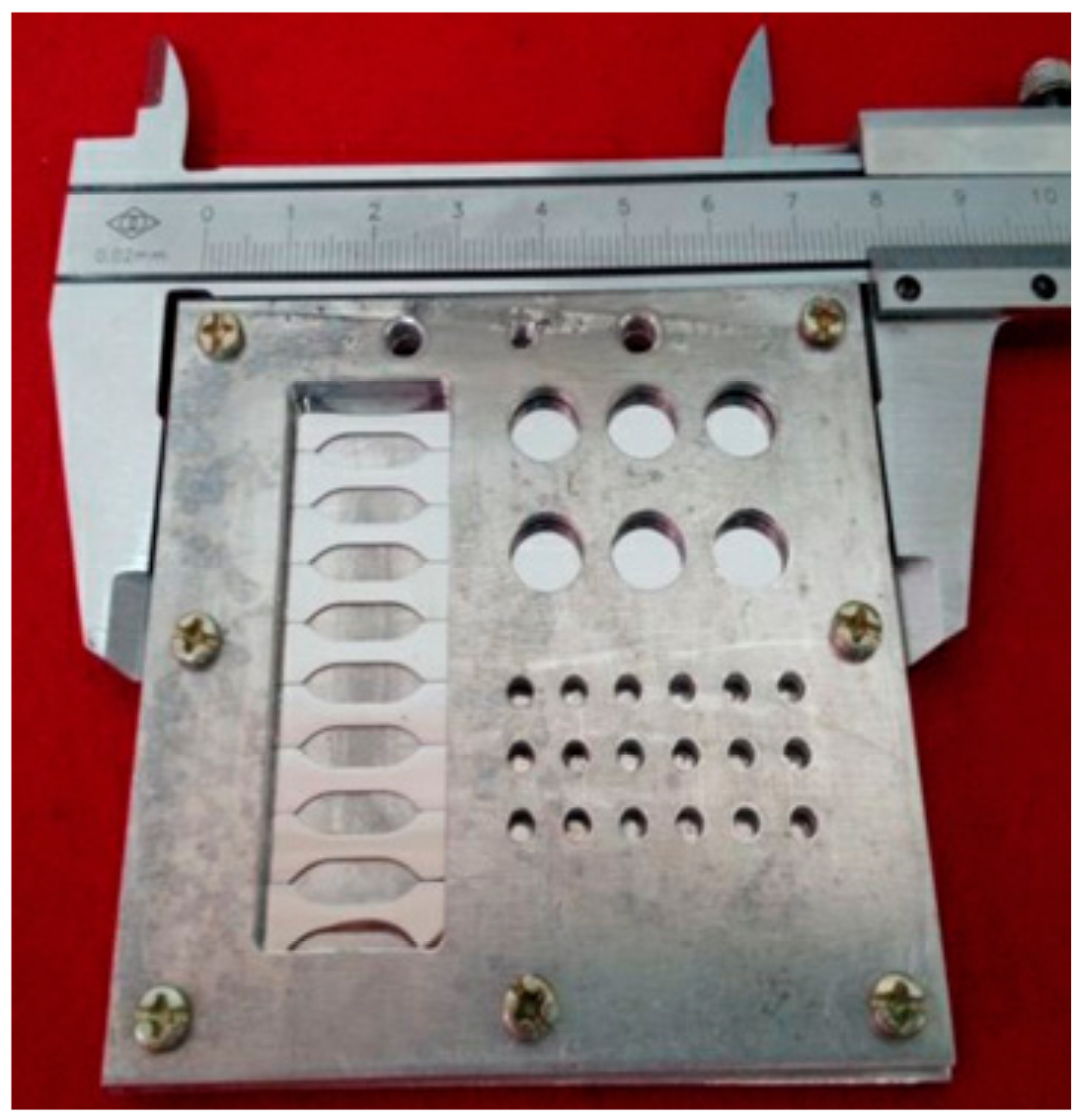
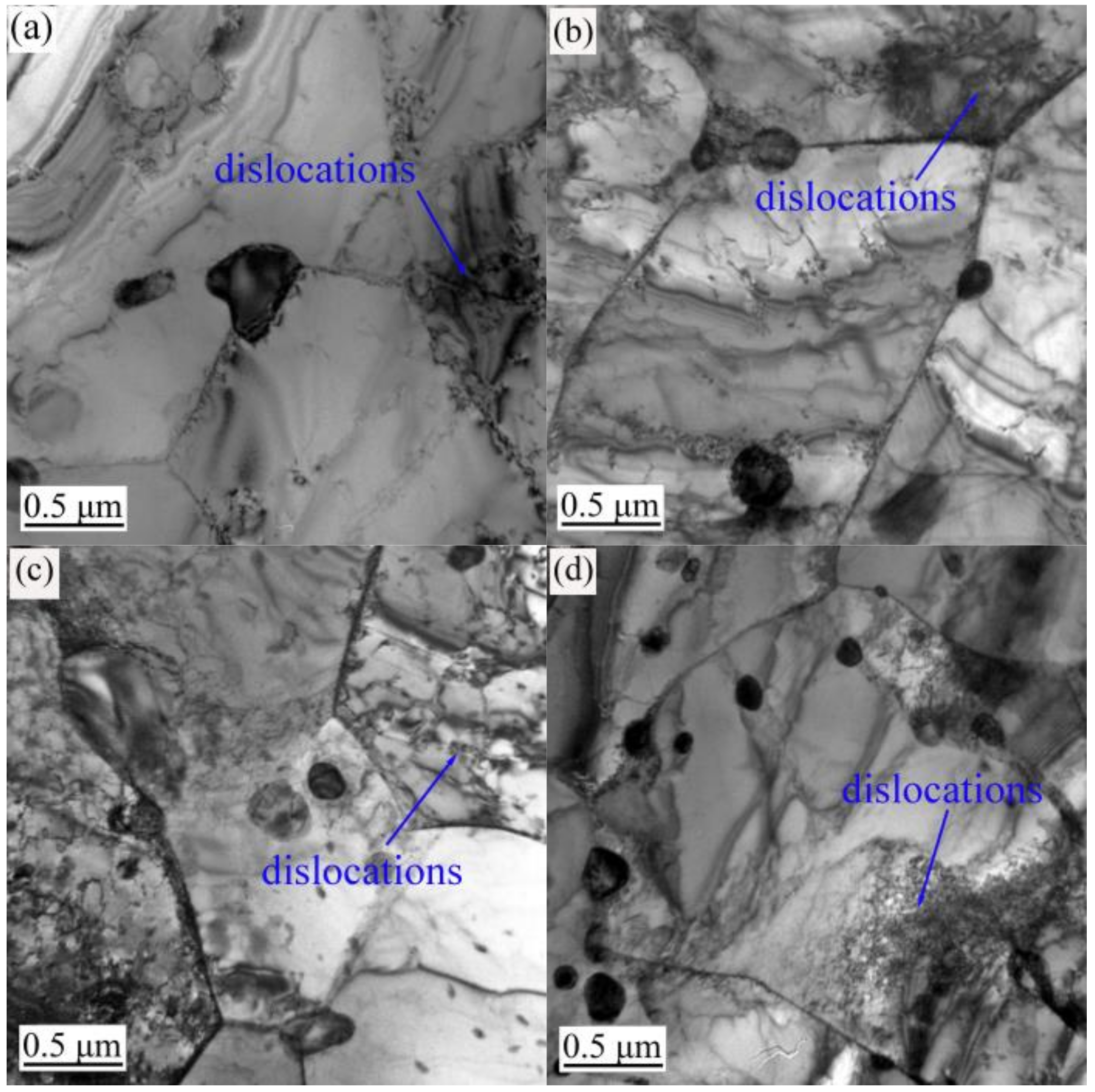
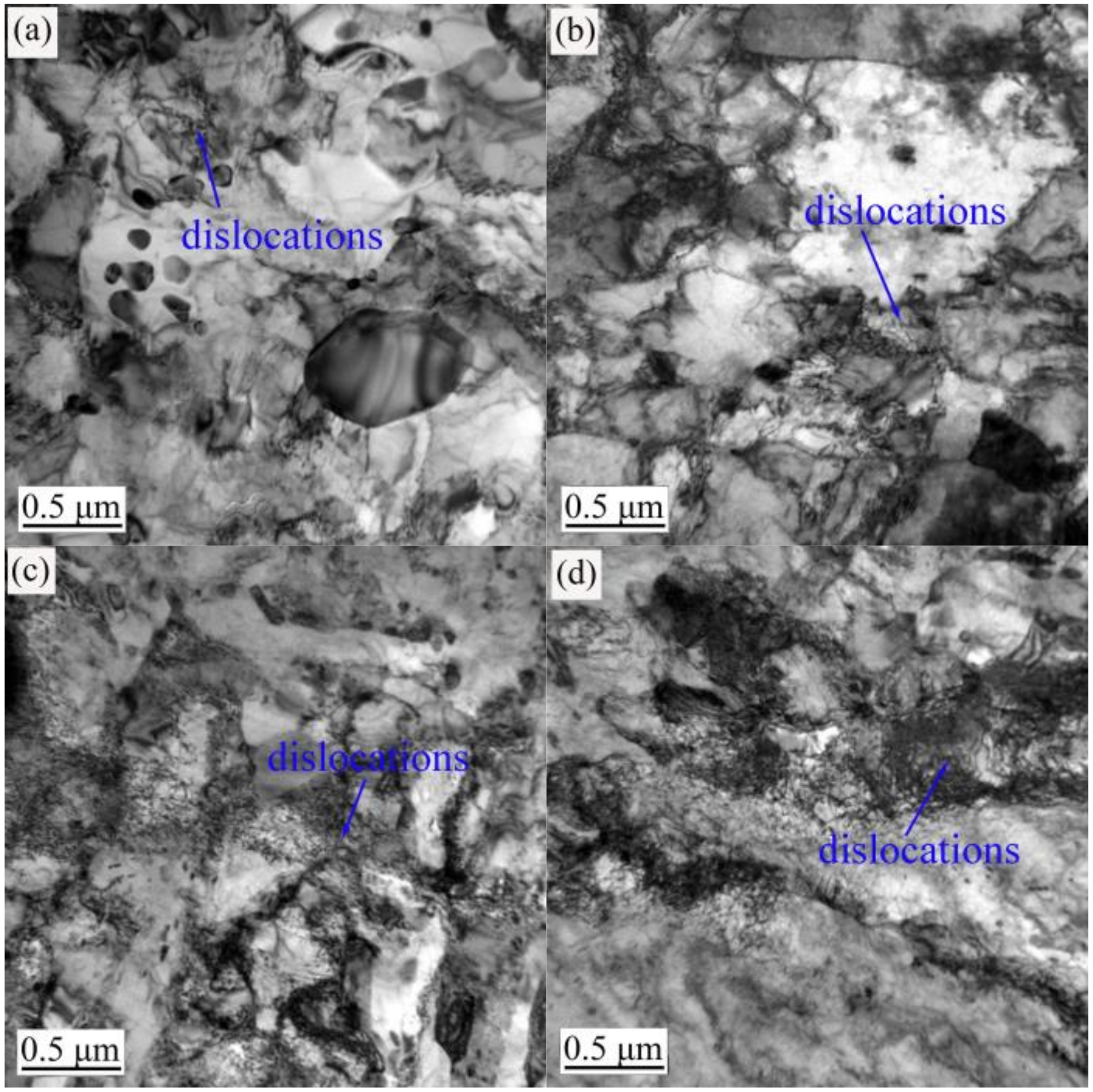
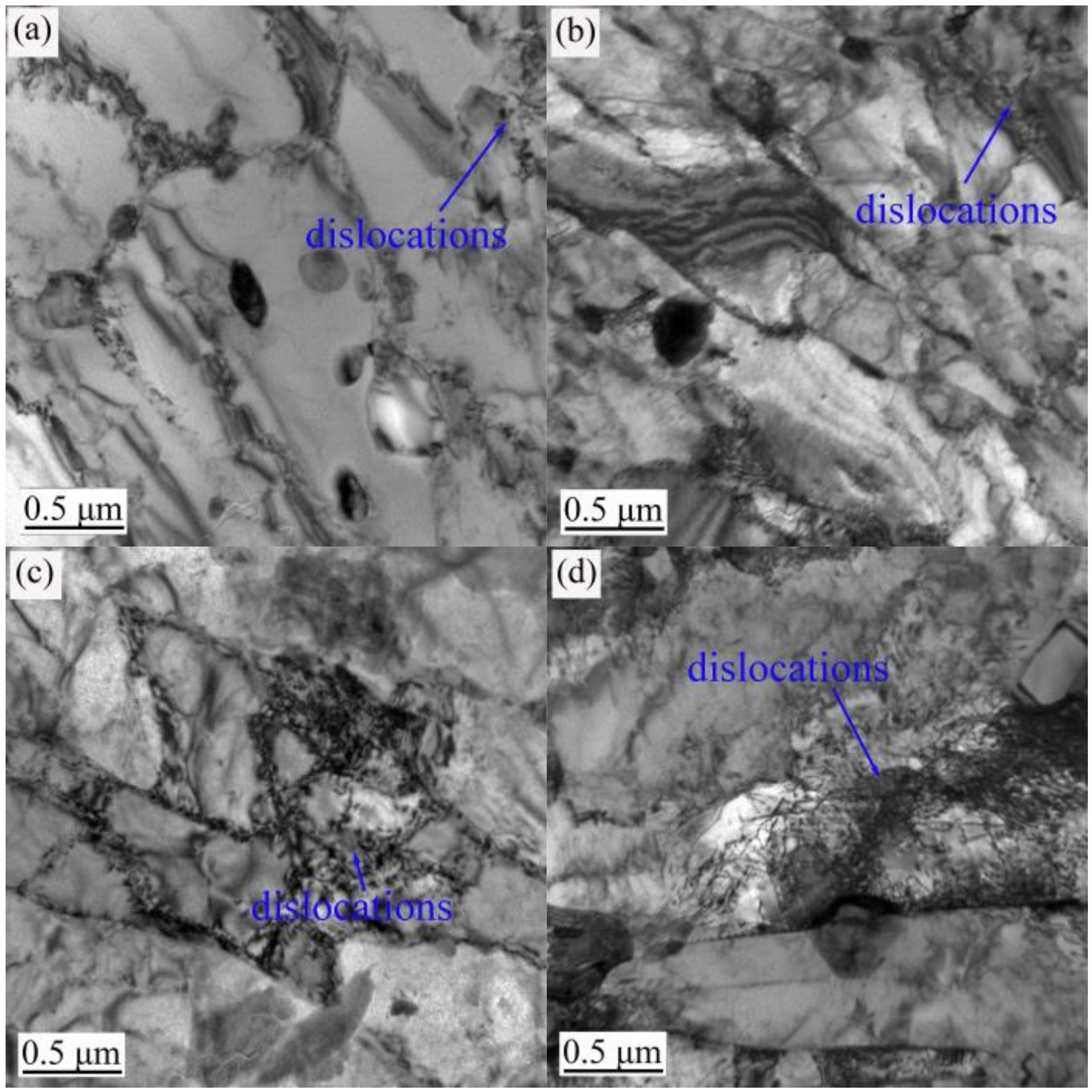
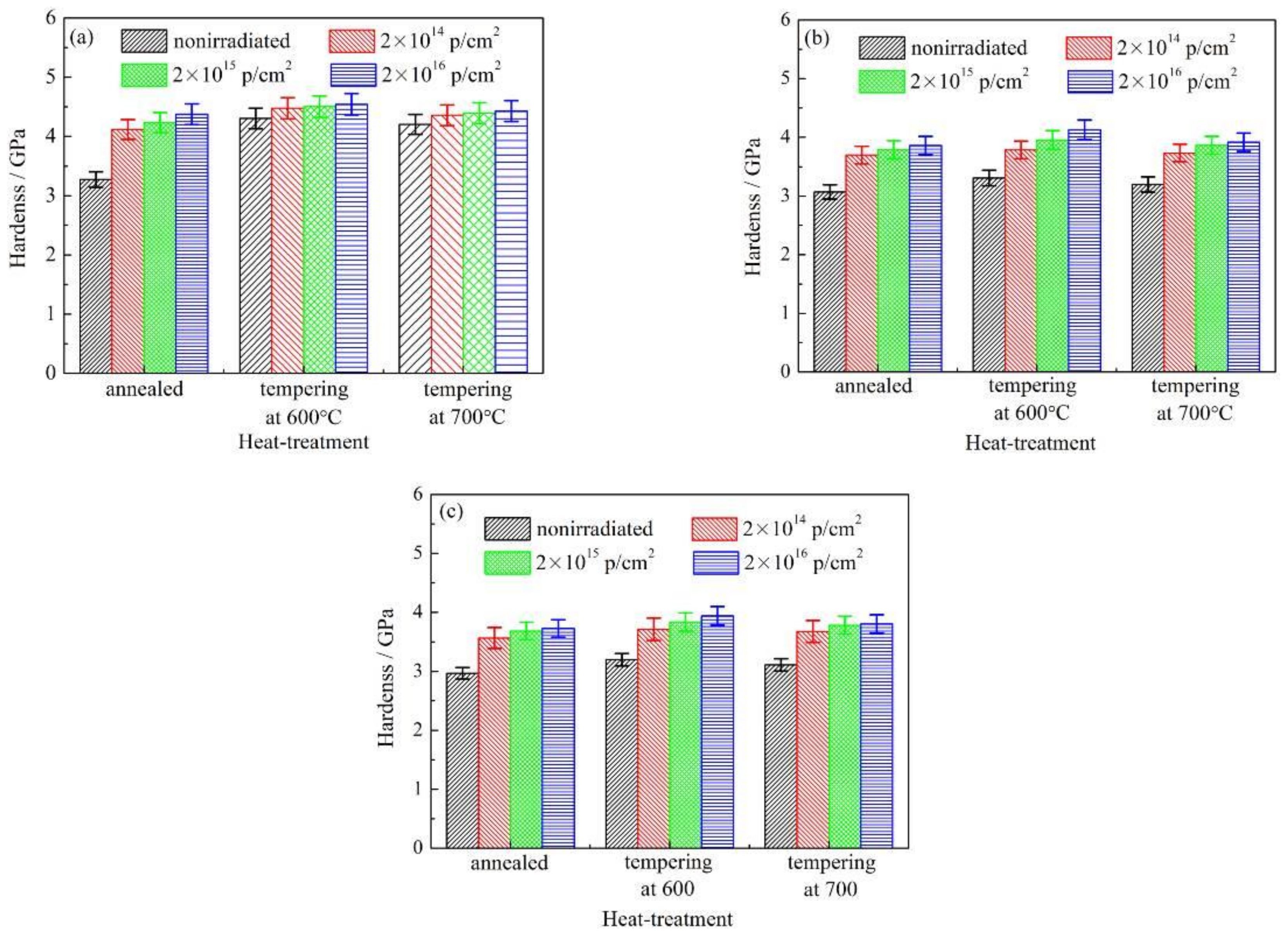
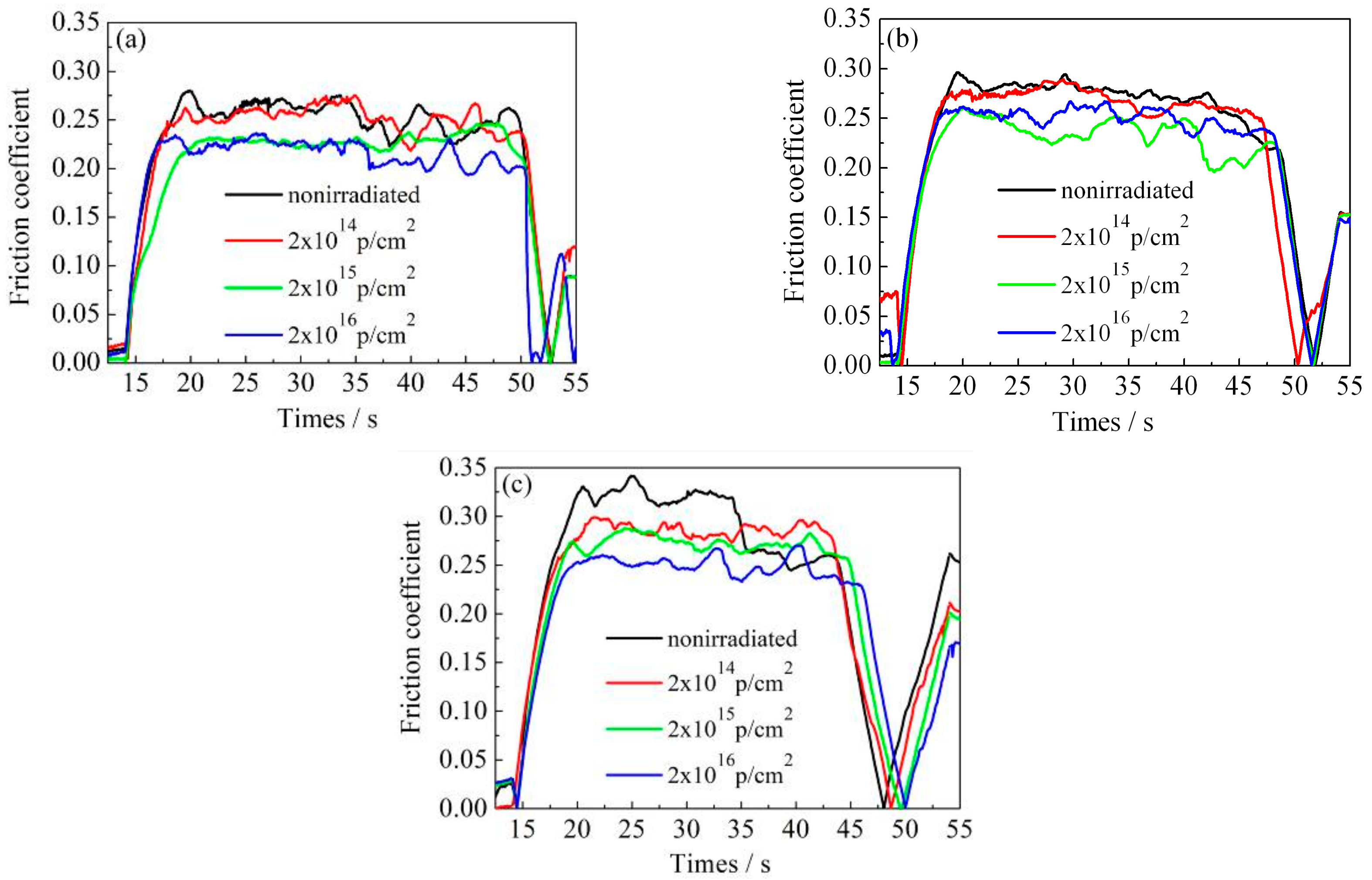
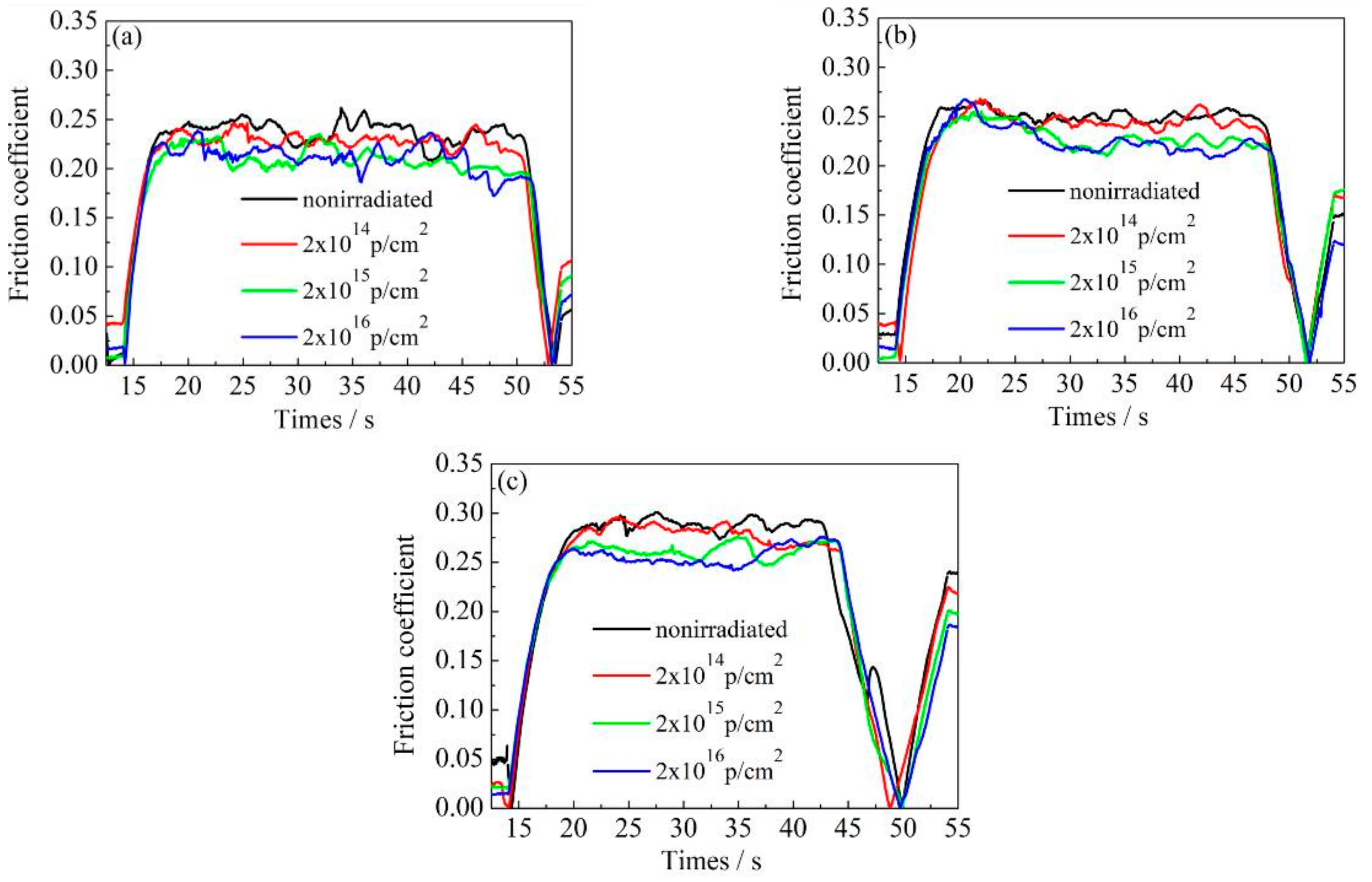
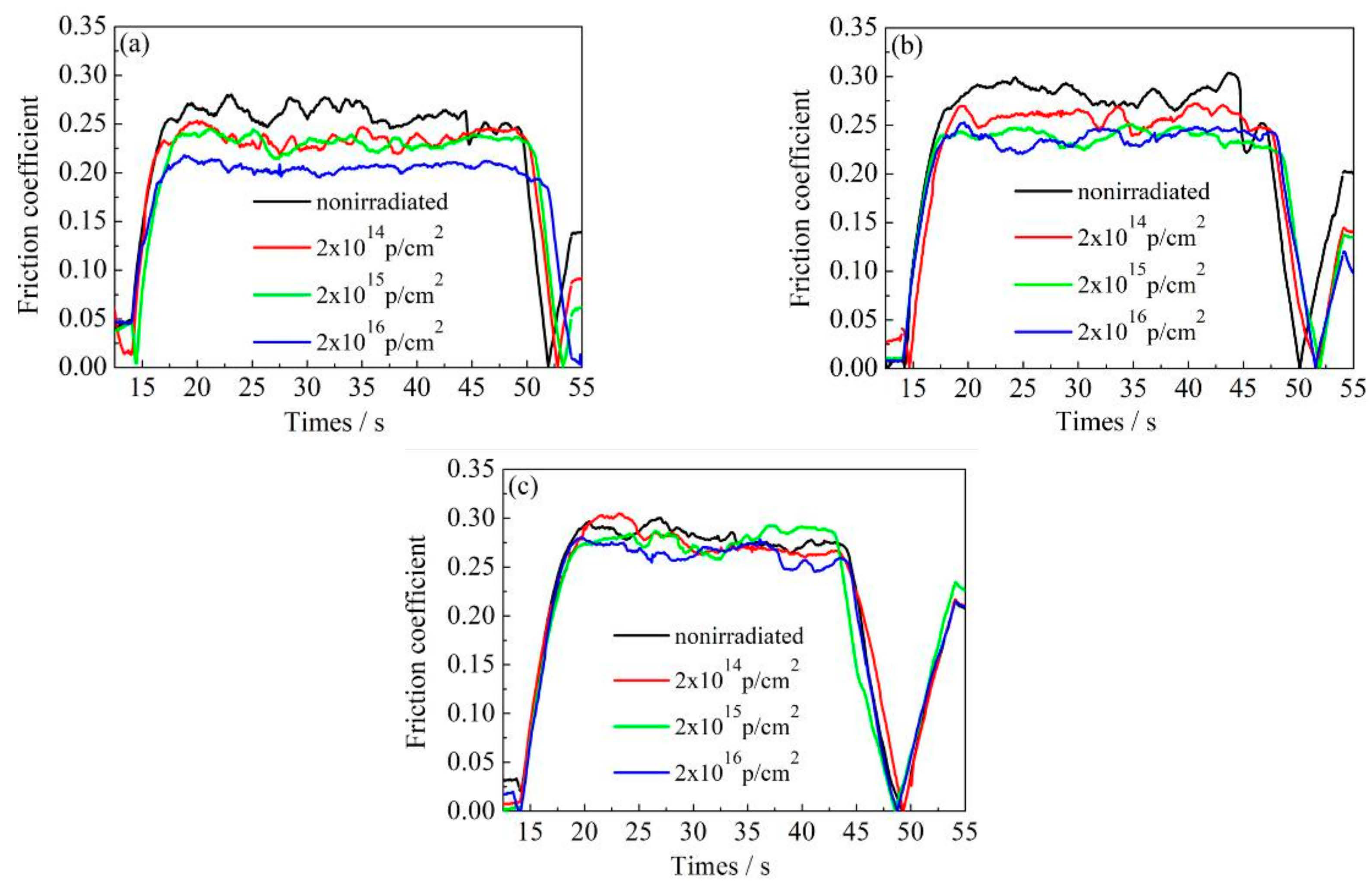
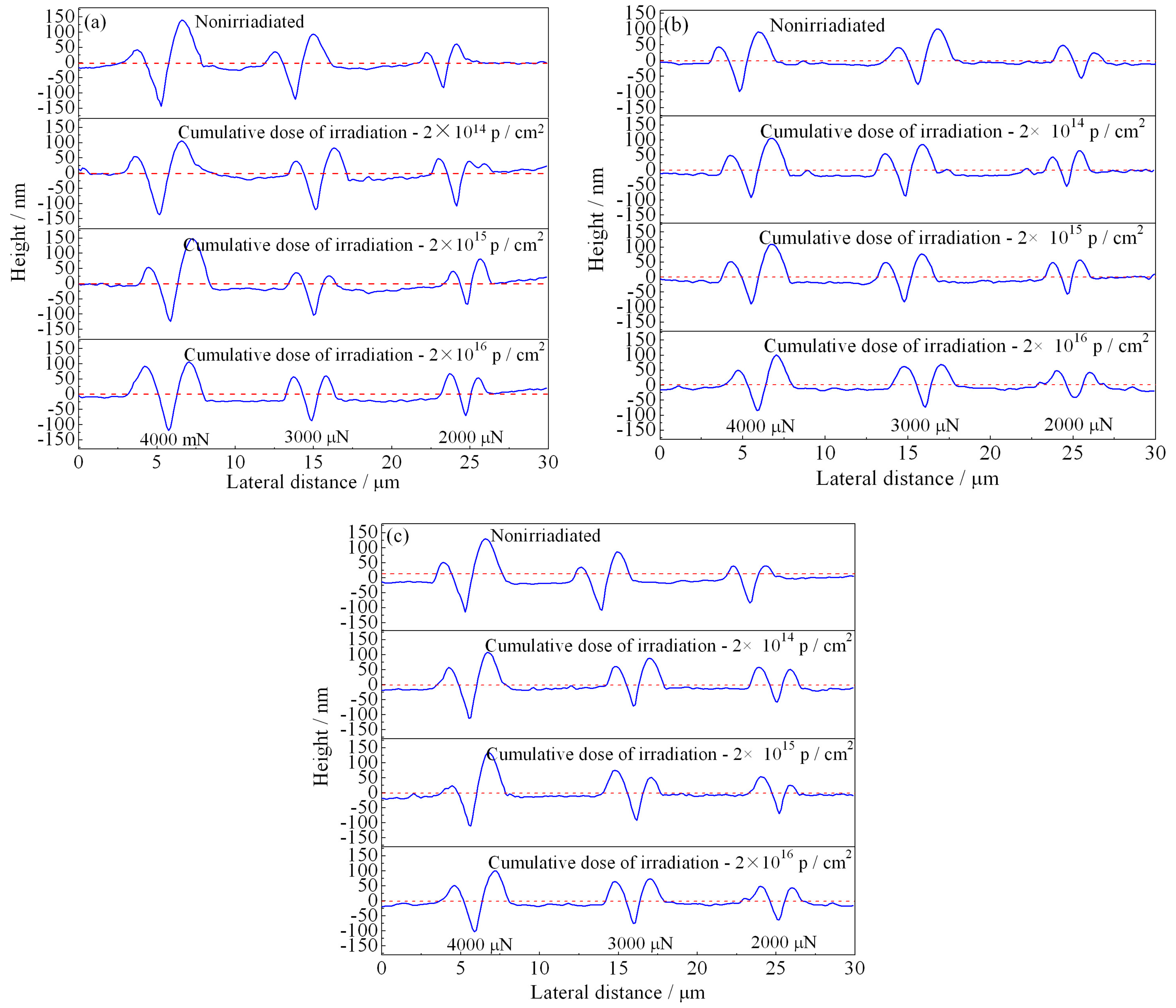
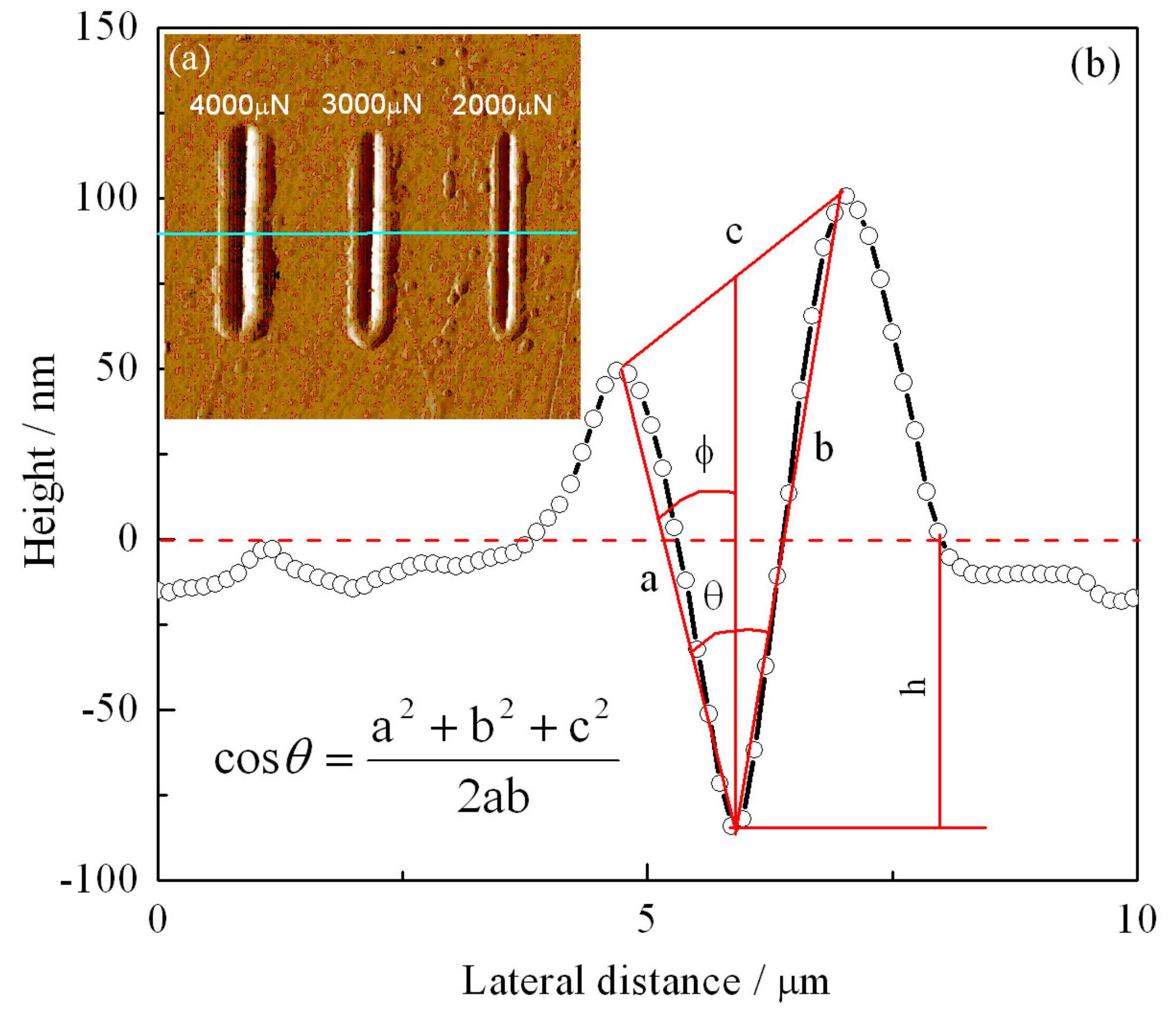
| Material | C | Mn | Si | S | P | Ni | Cr | Cu | Fe |
|---|---|---|---|---|---|---|---|---|---|
| AISI 420 | 0.21 | 0.27 | 0.53 | 0.009 | 0.025 | 0.18 | 12.23 | - | 86.546 |
| Material | Size (mm) | Quenching Temperature (°C) | Holding Time (h) | Cooling Method | Anneal Temperature (°C) | Tempering Temperature (°C) | Holding Time (h) | Cooling Method |
|---|---|---|---|---|---|---|---|---|
| AISI 420 | D = 20 | - | - | - | 680 | - | - | Cooling with furnace to 350 °C Air cooling to room temperature |
| 980 | 1 | oil cooling | - | 600 | 2.5 | Oil cooling | ||
| - | 700 | 2.5 | Oil cooling |
| Radiation Environment (Pa) | Radiation Energy (KeV) | Radiant Flux (protons·cm−2·s−1) | Radiation Temperature(°C) | Radiation Accumulative Proton (protons/cm2) |
|---|---|---|---|---|
| 10−3–10−4 | 160 | 1.25 × 1011 | Room temperature | 2 × 1014 |
| 2 × 1015 | ||||
| 2 × 1016 |
| Loads (μN) | Cumulative Protons (p/cm2) | Coefficient of Friction | |||||
|---|---|---|---|---|---|---|---|
| Annealing Status | Reduced % | Tempering at 600 °C | Reduced % | Tempering at 700 °C | Reduced % | ||
| 2000 | 0 | 0.253 ± 0.028 | 0 | 0.235 ± 0.026 | 0 | 0.260 ± 0.021 | 0 |
| 2 × 1014 | 0.247 ± 0.028 | 2.3 | 0.230 ± 0.017 | 2.1 | 0.236 ± 0.017 | 9.2 | |
| 2 × 1015 | 0.232 ± 0.014 | 8.3 | 0.214 ± 0.020 | 8.9 | 0.229 ± 0.016 | 11.9 | |
| 2 × 1016 | 0.216 ± 0.021 | 14.6 | 0.211 ± 0.027 | 10.2 | 0.207 ± 0.012 | 20.4 | |
| 3000 | 0 | 0.266 ± 0.030 | 0 | 0.254 ± 0.012 | 0 | 0.262 ± 0.041 | 0 |
| 2 × 1014 | 0.265 ± 0.028 | 1.02 | 0.250 ± 0.016 | 1.6 | 0.256 ± 0.017 | 2.3 | |
| 2 × 1015 | 0.250 ± 0.018 | 6 | 0.233 ± 0.023 | 8.3 | 0.238 ± 0.013 | 9.2 | |
| 2 × 1016 | 0.229 ± 0.032 | 13.9 | 0.238 ± 0.031 | 6.3 | 0.236 ± 0.015 | 9.9 | |
| 4000 | 0 | 0.293 ± 0.049 | 0 | 0.288 ± 0.014 | 0 | 0.283 ± 0.016 | 0 |
| 2 × 1014 | 0.286 ± 0.013 | 2.3 | 0.280 ± 0.016 | 2.8 | 0.281 ± 0.024 | 0.7 | |
| 2 × 1015 | 0.274 ± 0.015 | 6.5 | 0.261 ± 0.014 | 9.4 | 0.276 ± 0.017 | 2.5 | |
| 2 × 1016 | 0.251 ± 0.020 | 14.3 | 0.258 ± 0.017 | 10.4 | 0.262 ± 0.018 | 7.4 | |
| Loads (μN) | Cumulative Protons (p/cm−2) | Annealing Status | Tempering at 600 °C | Tempering at 700 °C | |||
|---|---|---|---|---|---|---|---|
| Maximum Depth (nm) | Wear Volume (μm3) | Maximum Depth (nm) | Wear Volume (μm3) | Maximum Depth (nm) | Wear Volume (μm3) | ||
| 2000 | 0 | 82.15 | 2.08 × 10−3 | 56.38 | 1.43 × 10−3 | 84.48 | 2.14 × 10−3 |
| 2 × 1014 | 103.75 | 2.62 × 10−3 | 53.83 | 1.36 × 10−3 | 57.56 | 1.46 × 10−3 | |
| 2 × 1015 | 64.95 | 1.64 × 10−3 | 56.16 | 1.42 × 10−3 | 69.05 | 1.75 × 10−3 | |
| 2 × 1016 | 69.82 | 1.77 × 10−3 | 40.00 | 1.01 × 10−3 | 62.91 | 1.59 × 10−3 | |
| 3000 | 0 | 123.43 | 3.12 × 10−3 | 75.89 | 1.92 × 10−3 | 107.79 | 2.73 × 10−3 |
| 2 × 1014 | 120.03 | 3.03 × 10−3 | 85.91 | 2.17 × 10−3 | 71.37 | 1.80 × 10−3 | |
| 2 × 1015 | 103.72 | 2.62 × 10−3 | 82.85 | 2.09 × 10−3 | 91.82 | 2.32 × 10−3 | |
| 2 × 1016 | 87.48 | 2.21 × 10−3 | 72.49 | 1.83 × 10−3 | 74.99 | 1.90 × 10−3 | |
| 4000 | 0 | 143.61 | 3.63 × 10−3 | 98.20 | 2.48 × 10−3 | 113.92 | 2.88 × 10−3 |
| 2 × 1014 | 136.35 | 3.45 × 10−3 | 91.07 | 2.30 × 10−3 | 111.79 | 2.82 × 10−3 | |
| 2 × 1015 | 123.71 | 3.13 × 10−3 | 88.99 | 2.25 × 10−3 | 109.62 | 2.77 × 10−3 | |
| 2 × 1016 | 119.24 | 3.01 × 10−3 | 84.03 | 2.12 × 10−3 | 102.36 | 2.59 × 10−3 | |
© 2019 by the authors. Licensee MDPI, Basel, Switzerland. This article is an open access article distributed under the terms and conditions of the Creative Commons Attribution (CC BY) license (http://creativecommons.org/licenses/by/4.0/).
Share and Cite
Dai, L.Y.; Niu, G.Y.; Ma, M.Z. Microstructure Evolution and Nanotribological Properties of Different Heat-Treated AISI 420 Stainless Steels after Proton Irradiation. Materials 2019, 12, 1736. https://doi.org/10.3390/ma12111736
Dai LY, Niu GY, Ma MZ. Microstructure Evolution and Nanotribological Properties of Different Heat-Treated AISI 420 Stainless Steels after Proton Irradiation. Materials. 2019; 12(11):1736. https://doi.org/10.3390/ma12111736
Chicago/Turabian StyleDai, L.Y., G.Y. Niu, and M.Z. Ma. 2019. "Microstructure Evolution and Nanotribological Properties of Different Heat-Treated AISI 420 Stainless Steels after Proton Irradiation" Materials 12, no. 11: 1736. https://doi.org/10.3390/ma12111736
APA StyleDai, L. Y., Niu, G. Y., & Ma, M. Z. (2019). Microstructure Evolution and Nanotribological Properties of Different Heat-Treated AISI 420 Stainless Steels after Proton Irradiation. Materials, 12(11), 1736. https://doi.org/10.3390/ma12111736




